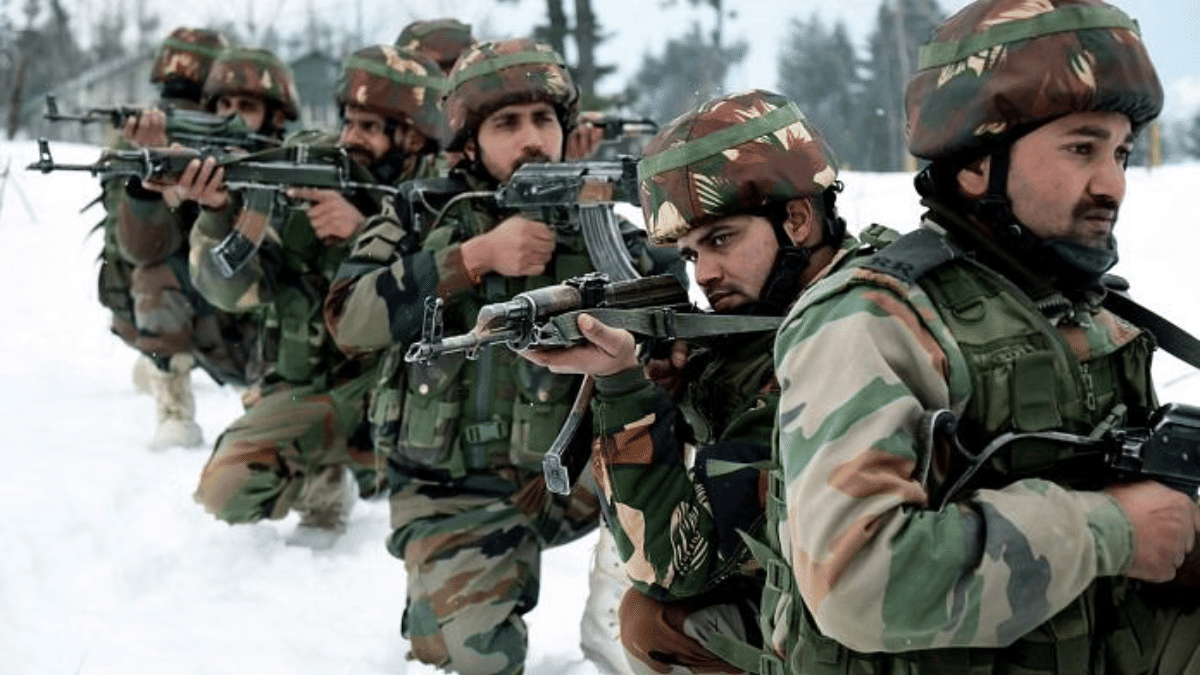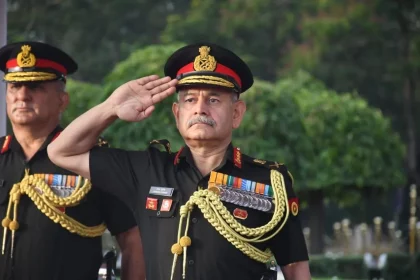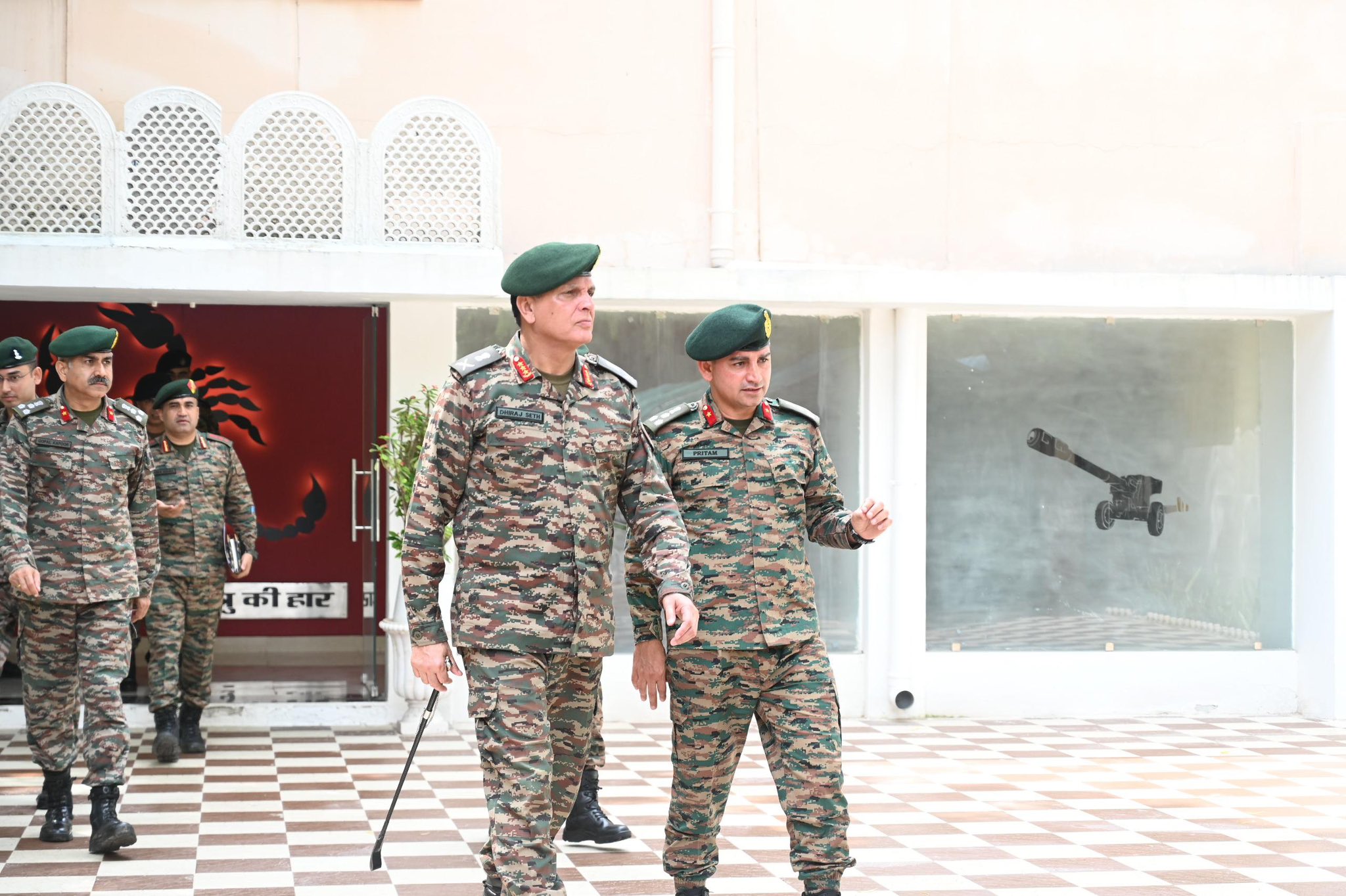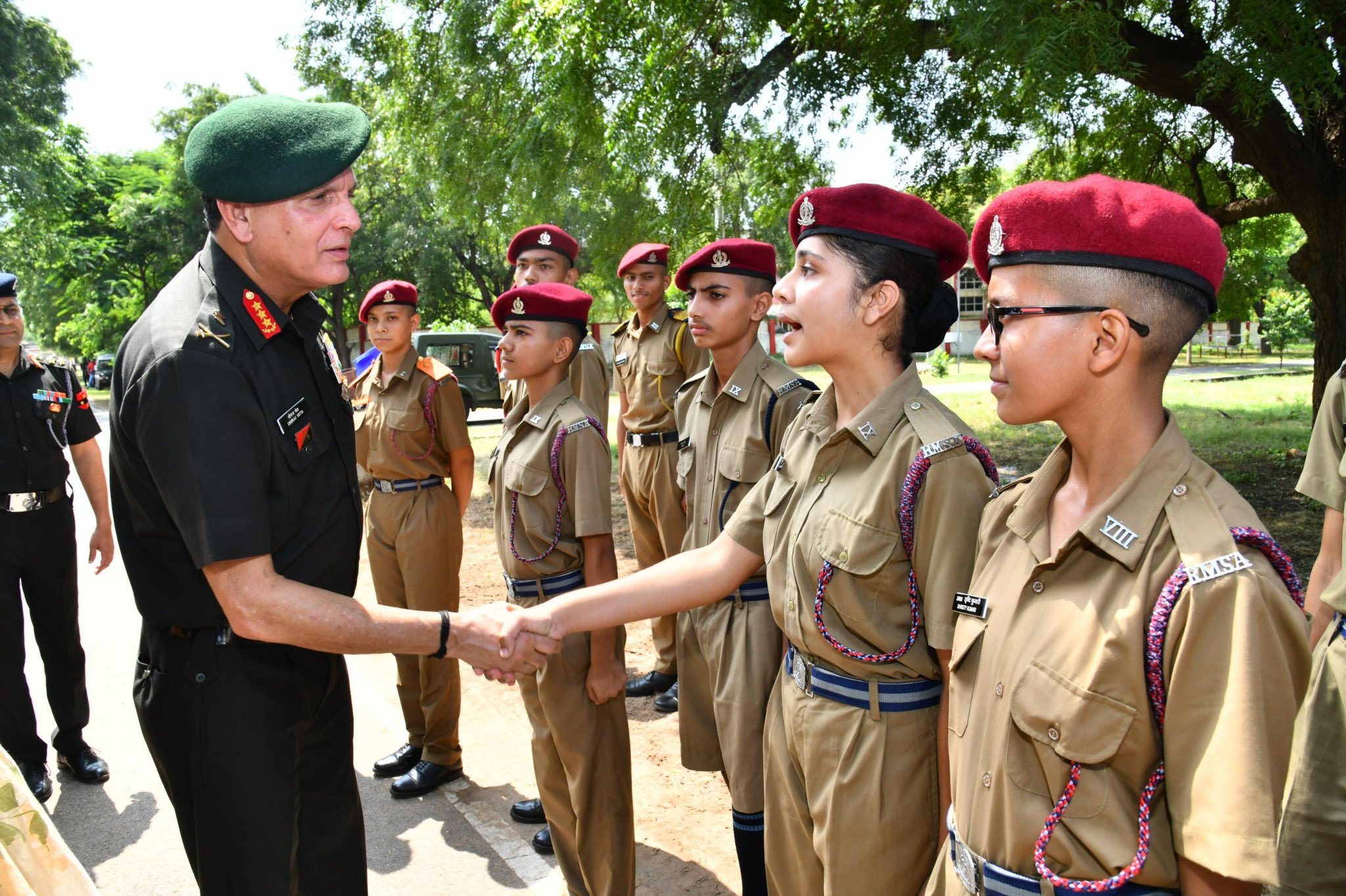Army to Raise First Five ‘Bhairav’ Commando Battalions by October 31
New ‘Bhairav’ battalions to bridge gap between infantry and Para-SF, boosting Army’s agility along key frontiers.
Army Chief Praises Railways’ Swift Support During Operation Sindoor, Honours 16 Officers
Chief of Army Staff General Upendra Dwivedi has lauded Indian Railways for its rapid and coordinated assistance during Operation Sindoor,…
Indian Army’s Southern Command Showcases Digital Sand Model at Jodhpur Military Station
Southern Command Showcases Indigenous 3D Digital Sand Model to Boost Combat Readiness and Decision-Making.
Heroic Sacrifice in the Rains: Tributes to Agniveer Jimmy Ngamminlun Mate
In a solemn ceremony on Friday, Lieutenant General P. K. Mishra, General Officer Commanding of the White Knight Corps, paid…
Lt Gen Dhiraj Seth Visits Rashtriya Military School Ajmer, Emphasizes Future Leadership and Modernization
During his visit, Lt Gen Seth reviewed academic, training, and administrative facilities, while felicitating cadets excelling in academics, sports, and…
Lt Gen Dhiraj Seth Stresses Military-Civil Fusion at Jodhpur Seminar, Highlighting India’s Hybrid Warfare Preparedness
In his address, the Army Commander underscored the growing importance of military-civil partnerships in shaping India’s security and innovation ecosystem.






